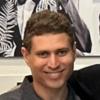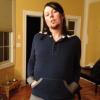Adverts help to support the work of this non-profit organisation. To go ad-free join as a Member.

#31
Posted 20 February 2007 - 08:56 PM
Rushing to the press before peer review, and questionable results, are indeed like cold fusion. But unlike cold fusion, the intrinsic physical feasibilty is sound, even if does take decades to make it work in any practical way.
#32
Posted 20 February 2007 - 09:11 PM
though at the present it's pretty worthless.
sponsored ad
#33
Posted 20 February 2007 - 10:36 PM
Edited by drus, 20 February 2007 - 10:46 PM.
#34
Posted 20 February 2007 - 10:51 PM
Forgive my ignorance, but would I be correct in saying that the human brain is a primitive naturally occuring form of a self-learning-quantum computer? Once again please excuse me, I'm no computer expert or neuroscientist. Thanks.
No. There is no evidence to suggest that a human brain uses quantum interactions for computation. Unless there is research that I am unaware of.
#35
Posted 20 February 2007 - 11:10 PM
To clarify, I was speaking specifically of Pons-Fleishman electrolytic cold fusion. There are other forms of "cold" fusion, such as inertial electrostatic confinement, that are well-established, just not particularly useful for energy production.No one has yet shown how the laws of physics unambiguously predict cold fusion.
Quantum brain computation is a theory of Roger Penrose and Stuart Hameroff, but it is not taken seriously in neuroscience.
#36
Posted 21 February 2007 - 01:18 AM
#37
Posted 24 February 2007 - 08:56 AM
"But I think once they get quantum computing working (its in the experimental stages now), that will make it much more feasible, since that technology is closer to how the human brain operates (some degree of indeterminism, such as that observed in quantum mechanics on the subatomic level).
But right now they are still stumped on trying to figure out how consciousness works and what parts of the brain are necessary for it and whether animals might have consciousness or not. It appears that consciousness is distributed over much of the brain, making it difficult to understand. And the interactions between neurons are far more complex than any current computer circuitry. There's billions of neurons and each has various types and numbers of connections to other neurons, creating such a large number of different connections and networks that our current computers cannot even begin to analyze all of the complex interactions (plus there seems to be some degree of indeterminism propogating from the subatomic level, which interacts with the action potentials generated in neuronal signalling, further complicating things). But I think one day when computers are advanced enough we will be able to understand much more and even create an artificial brain. "
I put that one part in bold, i.e. evidence that the brain may in fact be a quantum computer. I am not in this field, but that's my interpertation of that statement.
#38
Posted 24 February 2007 - 06:03 PM
Consciousness-collapsing-the-wavefunction theories of consciousness would mean that the large scale structure of the universe, positions of galaxies, galaxy clusters, etc., were not established until the first conscious being (defined how?) looked up into the night sky. That is patently ridiculous.
P.S. I have a PhD in fMRI, even though that has nothing to do with anything here.
Edited by bgwowk, 24 February 2007 - 07:47 PM.
#39
Posted 27 February 2007 - 10:12 PM
Brian, theoretically, observer-centric universes could exist, in the sense that universes would only form if they contain superintelligences at the end of time observing the entire history of the universe by examining the recollapsing light waves at the Big Crunch. Tipler argued this. The early universe would be given existence only because they were being "watched" from the future. As Barbour teaches us, time is an illusion, so this could work.
Btw, I really believe in strictly materialist MWI, I'm just playing around. I'm also noticing a lot of the non-supplement science-related threads on ImmInst are pretty straightforward because you (Brian) keep giving the correct answer to all the speculations and questions, thereby eclipsing any superfluous discussion. Its amusing because, in hindsight, the value of most non-Brian-participants can be measured merely by the reactions they solicit from you.
#40
Posted 25 March 2007 - 12:26 AM
I'm also noticing a lot of the non-supplement science-related threads on ImmInst are pretty straightforward because you (Brian) keep giving the correct answer to all the speculations and questions, thereby eclipsing any superfluous discussion. Its amusing because, in hindsight, the value of most non-Brian-participants can be measured merely by the reactions they solicit from you.
Heh, well said Michael.
Well said.
BTW, I agree with that 110% percent.
Wait, in Q/M we cant have percentages exceeding 66.6_% right? [sfty]
#41
Posted 02 June 2007 - 06:36 AM
New development in QP tech could put Orion on our desktops. Imagine that kind of power under the hood! Then imagine the protein folding capabilities of a distributed system of quantum computers.
#42
Posted 02 June 2007 - 07:05 AM
#43
Posted 02 June 2007 - 09:14 AM
http://www.nanotechn.../news/?id=10791
New development in QP tech could put Orion on our desktops. Imagine that kind of power under the hood! Then imagine the protein folding capabilities of a distributed system of quantum computers.
Interesting stuff but lets see it in action. Build a QC impliment the quantum factoring algorithm and factor the next number. It is tough to gage the real progress from these sort of abstract claims.
#44
Posted 09 August 2007 - 05:49 PM
#45
Posted 09 November 2007 - 10:18 PM
Google scientist to demo quantum computer
http://news.zdnet.co...m?user_rating=1
During a session at the SC07 supercomputing conference in Reno, Dr Hartmut Neven, a Google specialist in image recognition, will show an image-recognition algorithm running on a device, made by start-up D-Wave Systems, which is claimed to be the first practical quantum computer....
"Since the demo, we have been developing the support infrastructure for our projects and have used it to design, build and test seven generations of processor prototypes. Each of these generations has focused on a specific issue related to performance and/or scalability of commercial processors." He claimed the demo at SC07 will have 28 qubits, and will demonstrate an algorithm co-developed by Dr Neven, who has been at Google since the search giant bought his image-processing company, Neven Vision, in 2006.
D-Wave has not had its system externally validated, said Rose, because "there is only one meaningful measure of validation for a technology like this: does it outperform the systems people are using today in a metric that they care about? We are getting very close to achieving this objective."
D-Wave has previously promised to make a 1,000-qubit computer that integrates with conventional database systems by the end of 2008, and has promised to allow the public to use an Orion system made available on the web.
#46
Posted 13 November 2007 - 05:18 PM
#47
Posted 14 November 2007 - 01:28 AM
#48
Posted 14 November 2007 - 05:57 AM
d-wave
As an example, consider the modeling of a nanosized structure, such as a drug molecule, using conventional (i.e., non-quantum) computers. Solving the Schrodinger Equation (SE), the fundamental description of matter at the QM level, more than doubles in difficulty for every electron in the molecule. This is called exponential scaling, and prohibits solution of the SE for systems greater than about 30 electrons. A single caffeine molecule has more than 100 electrons, making it roughly 100,000,000,000,000,000,000,000,000,000,000,000, 000,000,000,000,000 times harder to solve than a 30-electron system, which itself makes even high-end supercomputers choke.
This restriction makes first-principles modeling of molecular structures impossible, and has historically defined the boundary between physics (where the SE can be solved by brute force) and chemistry (where it cannot, and empirical modeling and human creativity must take over).
Quantum computers are capable of solving the SE with linear scaling exponentially faster and with exponentially less hardware than conventional computers. For a QC, the difficulty in solving the SE increases by a small, fixed amount for every electron in a system. Even very primitive QCs will be able to outperform supercomputers in simulating nature.
Even more significant, as QC technology matures, systems containing hundreds, thousands, even millions of electrons will be able to be modeled by the direct, brute force solution of the SE. This means that the fundamental equations of nature will be solvable for all nanoscale systems, with no approximations and no fudge factors. Results of these virtual reality simulations will be indistinguishable from what is seen in the real world, assuming that QM is an accurate picture of nature.
Maybe they are keeping their technology secret so they will be the first to market? TO MAKE MONEY!!! (hopefully that's the case)I don't understand why they won't publish in peer-reviewed journals. If there's something to hide we'll find out sooner or later and its going to hurt them more.
Looking at the site a bit more, it looks suspiciously simple. I don't know, something doesn't seem quite right but I could be wrong.
Edited by hrc579, 14 November 2007 - 06:20 AM.
#49
Posted 15 November 2007 - 03:09 AM
#50
Posted 15 November 2007 - 03:10 AM
http://www.guardian..../15/news.google
http://www.hpcwire.c...pc/1891135.html
#51
Posted 15 November 2007 - 04:02 AM
#52
Posted 15 November 2007 - 07:55 AM
#53
Posted 23 January 2009 - 06:18 PM
http://www.technolog...ting/22013/?a=f
A Quantum Memory Leap Transferring the state of separated ions could point the way to quantum computing. In recent years, physicists have devised numerous ways to use the oddities of quantum mechanics to transmit and process information. Now a team of researchers has announced an important step toward using this quantum information: the ghostly transfer of the quantum state of a single ion to another one a meter away. Since ions can store a quantum state for many seconds, this scheme for "quantum teleportation" could buy enough time for manipulations that allow long-distance communications that are immune to eavesdropping, or for computations that exploit the quantum mechanics to perform blazing fast calculations. To transfer a little quantum information from one atomic-sized system to another, the two systems must start out in the quantum condition called entanglement. Entangled systems always give corresponding answers, like two coins that, although individually unpredictable, always come up one heads and one tails. Physicists have teleported the state between entangled photons of light, but unfortunately, they can't store the quantum information for very long. Recently, other researchers have teleported the much longer-lived quantum state of individual ions, but only when they were trapped very close together. To transfer persistent quantum information over longer distances, Chris Monroe and his group at the University of Maryland teamed with Luming Duan at the University of Michigan to trap and cool two individual ytterbium ions.The team encoded quantum information by mixing two states that differ only by the angular momentum of the nucleus. Unlike the "0" or "1" value of a bit in ordinary computing, the researchers can create an arbitrary mixture of the two nuclear states, known as a qubit, by subjecting the ions to microwaves. Once formed, an ion retains this mixture for several seconds--long enough to perform calculations that act on both values simultaneously. Extending a technique that Monroe's team demonstrated in 2007, the researchers exposed both ions to an ultrashort pulse of light, knocking each to a higher-energy state. Each ion then returned to its original state by emitting a photon. Measuring the color of this photon would have left the ion in one of the two nuclear states. But instead, the researchers just tested whether the two photons were different colors. Since they didn't determine which color came from which ion, seeing this result left the ions in an entangled state that included both possibilities. To perform teleportation, the researchers prepared the left-hand ion in an arbitrary quantum state, and then repeatedly zapped the ions with laser pulses until they saw the pairs of opposite-color photons that heralded the entangled state. They quickly measured which nuclear state the left-hand ion was in, in the process destroying its quantum mixture. But the entanglement causes a closely related mixture to appear in the right-hand ion. The researchers turned this back into a teleported version of the original state by manipulating it in one of two ways, depending on which state they measured for the left-hand ion. "This is the first realization of quantum teleportation between two remote atoms," observes Myungshik Kim of Queen's University Belfast, in Northern Ireland, who was not involved in the work. "It's a quite clever technique." One problem is that it takes almost 100 million laser pulses--about 10 minutes--to get a single entangled pair. To be useful for further experiments, this number needs to be improved about 1,000-fold, mainly by collecting more of the emitted photons. The scheme for teleporting between distant ions could enable quantum repeaters that allow long-distance transmission of quantum information, Monroe notes. In addition, he says that it is well suited for an increasingly studied approach to quantum computation that starts with a large number of entangled qubits.
#54
Posted 05 March 2009 - 05:13 PM
Way cool!This is interesting. Slowly, slowly, maybe one day we'll be able to use full power quantum computing.

http://www.technolog...ting/22013/?a=f
#55
Posted 27 March 2013 - 05:35 PM
#56
Posted 28 March 2013 - 06:28 PM
D-wave says they are using techniques in AQC to help solve np-complete problems via energy minimization of a quantum state that has been mapped to problems in mathematics. I believe they have also described their technique in the past as quantum annealing, related to classic simulated annealing frequently used in mathematical optimization of "np-hard" variants of np-complete problems.
An np-complete problem is a yes/no type of computer decision problem defined on a simple abstract model of a computer called a "Deterministic Turing Machine". Without getting into too much detail, the np-complete problems appear to be "exponentially difficult" in the size of the problem "N". These problems come up frequently in problems like the famous TSP (Traveling Salesperson Problem) and other routing, scheduling, and assignment problems of interest to industry and the government.
Genuine AQC has been shown to be equivalent to standard "gate-based" quantum computing, and both can be shown to be "Turing Complete", and polynomially equivalent to each other (i.e., basically AQC = regular QC).
http://arxiv.org/abs/quant-ph/0405098
http://arxiv.org/pdf...h/0405098v2.pdf
From the abstract:
Adiabatic Quantum Computation is Equivalent to Standard Quantum Computation
Dorit Aharonov, Wim van Dam, Julia Kempe, Zeph Landau, Seth Lloyd, Oded Regev
(Submitted on 18 May 2004 (v1), last revised 26 Mar 2005 (this version, v2))
Adiabatic quantum computation has recently attracted attention in the physics and computer science communities, but its computational power was unknown. We describe an efficient adiabatic simulation of any given quantum algorithm, which implies that the adiabatic computation model and the conventional quantum computation model are polynomially equivalent. Our result can be extended to the physically realistic setting of particles arranged on a two-dimensional grid with nearest neighbor interactions. The equivalence between the models provides a new vantage point from which to tackle the central issues in quantum computation, namely designing new quantum algorithms and constructing fault tolerant quantum computers. In particular, by translating the main open questions in the area of quantum algorithms to the language of spectral gaps of sparse matrices, the result makes these questions accessible to a wider scientific audience, acquainted with mathematical physics, expander theory and rapidly mixing Markov chains.
So the debate (and controversy) is not about the Turing universality of AQC, but is really centered on whether D-Wave is truly performing AQC in a Turing universal manner. That debate continues, but I do believe they can come up with good answers to very difficult problems, even if they are not being performed by a Turing universal QC.
For the class NP (and np-complete) problems mentioned in their literature in the past, it needs to be pointed out that at best, theoretically, they can only get about square root speedup of the important subclass np-complete (and np-hard) which includes a huge array of problems of interest to industry and defense in scheduling, optimization, etc. The np-complete problems are "realistically viewed" as being exponentially difficult in size of the problem N, although it is still unknown whether a polynomial time algorithm can solve NP (the famous unsolved question: is P equal to NP?).
http://en.wikipedia....alesman_problem
Let's look at a famous problem like the Traveling Salesperson Problem (TSP) with N=25. In this problem we ask a salesperson to visit 25 cities once and only once on his/her tour of cities, and choose the shortest possible route/path. That would require (N-1)! = 24! = 24*23*22*...*2*1 paths to be investigated (! refers to the factorial function, so 5! = 5 * 4 * 3 * 2 * 1).
Below I use Srinivasa Ramanujan to estimate (n-1)! where n = 25 cities:
http://en.wikipedia....ons_for_large_n
ln(n!) != n * ln(n) - n + 1/6 * log(n(1 + 4n(1+2n))) + 1/2 * log(pi) = 54.7847
where pi = 3.1415926... and e = 2.718281828... = base of natural log
==>
n! = 6.20408 e+23
An interesting point to remember: Avogadro's number (a mole of particles) is about 6.02e+23, so the number of possible paths for a 25 city TSP problem is about Avogadro's number, which gives you an idea of the size of the problem for n=25. The value of Avogadro's is defined as the number of atoms in 12 grams of pure carbon-12. It is also important to note that N=25 is a very small problem compared to NP-Hard optimization typically found in industrial and military applications.
One of the claims in the past was that the computer could help address problems in np-hard optimization like the TSP and other problems in scheduling, assignment, and other tasks. This would be true in the sense that it would help, since the NP class does admit a solution via an algorithm called Grover's quantum computing algorithm for unstructured search. Grover does produce a square root speedup in NP, but the square root of exponential growth is still exponential (using best guess, P != NP). An np-complete problem growing like exp(n) will grow like exp(n/2) via Grover on a Turing universal QC.
Given the foundational nature of Bennett’s paper, here is the abstract in its entirety:
http://arxiv.org/pdf...-ph/9701001.pdf
http://epubs.siam.or...rnalCode=smjcat
Strengths and Weaknesses of Quantum Computing, Charles H. Bennett, et al.
Abstract. Recently a great deal of attention has been focused on quantum computation following a sequence of results [Bernstein and Vazirani, in Proc. 25th Annual ACM Symposium Theory Comput., 1993, pp. 11-20, SIAM J. Comput., 26 (1997), pp. 1411-1473], [Simon, in Proc. 35th Annual IEEE Symposium Foundations Comput. Sci., 1994, pp. 116-123, SIAM J. Comput., 26 (1997), pp. 1474-1483], [Shor, in Proc. 35th Annual IEEE Symposium Foundations Comput. Sci., 1994, pp. 124-134] suggesting that quantum computers are more powerful than classical probabilistic computers. Following Shor's result that factoring and the extraction of discrete logarithms are both solvable in quantum polynomial time, it is natural to ask whether all of NP can be efficiently solved in quantum polynomial time. In this paper, we address this question by proving that relative to an oracle chosen uniformly at random with probability 1 the class NP cannot be solved on a quantum Turing machine (QTM) in time o(2n/2). We also show that relative to a permutation oracle chosen uniformly at random with probability 1 the class NP ∩ co-NP cannot be solved on a QTM in time o(2n/3). The former bound is tight since recent work of Grover [in Proc. 28th Annual ACM Symposium Theory Comput., 1996] shows how to accept the class NP relative to any oracle on a quantum computer in time O(2n/2)
A few comments are in order here. The paper states that the class NP (which includes the NP-Complete subclass) cannot be solved in o(2n/2) time, using the “little o notation”, which means that the result is asymptotically bounded by 2n/2 , with the difference between the function and the asymptote being negligible for large n. The Grover result returns an answer in O(2n/2) time, where the “big O notation” means that the difference between the function and the asymptote is finite (perhaps not negligible) for large n. When the authors state that the bound on NP is tight, they mean that the solution time for problems in the class is between o(2n/2) and O(2n/2), i.e. the solution time is asymptotically bounded between asymptotic negligence and asymptotic finite difference. And very basically, in short approximate terms, we have square root speedup in np-complete. Good, but still requires exponential search time in size of the problem "N", or number of cities, or other defining characteristic of class NP.
If the D-Wave system is really doing a QC solution in a Turing universal way, regardless of whether it is adiabatic or traditional gate based QC, then we might have some really embarrassing moments wrt security and "stored encrypted messages"... i.e., messages that were stolen from secure facilities in an encrypted public key format years earlier could now be subject to Shor's algorithm for RSA and elliptic curve cryptosystems, and similar encryption techniques.
While the Shor algorithm could attack PK cryptography, some np-complete based encryption systems could be attacked via Grover, and while 1.0 e25 may seem like a lot of combinations to search for an exact search, in some cases a search, while expensive via a QC, might be worthwhile in a space of 1.0 e12 (e.g. national security applications).
I have posted before about the problems remaining "hard" with QC in class NP unless the standard assumption of linearity in quantum mechanics is dropped. A nonlinear quantum theory yields polynomial time solution of NP-Complete and #P-Complete. (#P could still be hard in classic computation even if in the future it is shown that P = NP). Given that most research assumes linear field theories, then the class NP will likely be viewed as hard in the near future, even on a QC.
http://arxiv.org/abs/quant-ph/9801041
http://arxiv.org/pdf...h/9801041v1.pdf
Nonlinear quantum mechanics implies polynomial-time solution for NP-complete and #P problems
Daniel S. Abrams (1), Seth Lloyd (2) ( (1) Dept. of Physics, MIT, (2) Dept. of Mechanical Engineering, MIT)
If quantum states exhibit small nonlinearities during time evolution, then quantum computers can be used to solve NP-complete problems in polynomial time. We provide algorithms that solve NP-complete and #P oracle problems by exploiting nonlinear quantum logic gates. It is argued that virtually any deterministic nonlinear quantum theory will include such gates, and the method is explicitly demonstrated using the Weinberg model of nonlinear quantum mechanics.
There are other classes like #P-Complete that may be hard even if P=NP (making np-complete "easy", not currently believed, but unknown). Problems in the #P-complete class include problems in network reliability and survivability.
The take away from this post is that IF D-Wave's system is Turing universal, then we might have an "oh sh*t" moment in national security. My guess is that they are doing a non-Turing universal variant of quantum annealing that may provide *good* solutions in NP, but not an exact solution.
This relates to longevity since there are a number of problems in protein folding, gene sequencing, and other areas that are np-complete.
Edited by npcomplete, 28 March 2013 - 06:31 PM.
#57
Posted 14 April 2013 - 03:32 PM
#58
Posted 29 April 2013 - 04:09 PM
Now a paper published on the arXiv preprint server takes a step forward in showing that it really does operate on a quantum level, Nature News Blog reports.
In 2011, a group led by scientists working with D-Wave published a paper in Nature with evidence that their 8-qubit system was working on a quantum level: it responded to temperature changes as expected for a quantum device.
Now, a group of independent scientists follows that up by showing that the 128-qubit version of the D-Wave computer (or at least the 108 functioning qubits in the specific computer that they analyzed) also seems to be behaving quantumly.
Scott Aaronson, a theoretical computer scientist at the Massachusetts Institute of Technology in Cambridge who has historically been sceptical of D-Wave’s claims, says that he is fairly convinced by the data, but that there are plenty of important questions remaining — including whether the current or future versions of the D-Wave computer will actually be any faster than classical machines.
#59
Posted 30 April 2013 - 03:01 AM
What exactlly does that mean?
http://www.kurzweila...ng-was-the-code
Is the universe just a simulation, or something similar or how do you understand this thesis?
sponsored ad
#60
Posted 10 May 2013 - 06:44 AM
http://www.technolog...the-races-wins/
If this thing is legitimate, then what are the potential applciations for anti-aging research? Aubrey is a computer scientist himself, so does he have any particular opinions on this?
Also tagged with one or more of these keywords: quantum computing
Round Table Discussion →
Other Conversations →
Townhall →
Ushering in the Diamond Age of Quantum ComputingStarted by Robert Magnuson , 25 Nov 2014 |
|

|
||
Community →
LongeCity →
Projects →
GEO-DMFStarted by Mind , 09 Sep 2014 |
|

|
1 user(s) are reading this topic
0 members, 1 guests, 0 anonymous users






















































